Chicken farming is one of the biggest in the food industry. This is due to the high demand for chicken and eggs around the world. Chicken farming is no longer the conventional type of farming we know. Today, it uses some of the most advanced technologies, from feeding chickens to inspecting and hatching them. Let’s look at some of the Different Types of Chicken Farming in the United States and the pros and cons of each type.
Reasons for chicken farming


Once upon a time, chickens lived in jungles and ate greenery and insects. But today, chickens have been domesticated and are modified to meet commercial needs and maximize production to meet the increasing population need and for profit. Chickens are raised for two main reasons- for eggs and for their meat.
Layer Chickens, or chickens that can lay eggs, have been bred over many generations to increase egg production. In other words, they are genetically manipulated to lay at least 250-300 eggs per day. These chickens are also later used for meat, but their primary purpose is to lay eggs. Please read my article on layer chickens and layer chicken farming for more information.
Next, chickens are raised for meat. This type is mostly called broiler chicken. These are chickens that have been modified to put on as much weight as possible within a short period of time. Once they reach their maximum size, which is in about four to six weeks, they are slaughtered and sold for meat.
Different Types of Chicken Farming
Now there are many types of farming methods for both types of chickens. Simply, they can be classified into two. Intensive chicken farming and extensive.
Intensive Chicken farming
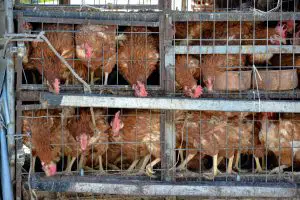

As implied by the term, this type of chicken farming is where chickens are grown in factories. As much as this sounds indigestible, chickens are crammed into factories and mass manufactured for profit. Intensive farming systems use two main types of chicken housing systems- deep-litter housing and battery cages. Both types may not be the best conditions for chickens to grow, but deep-litter housing is a bit better in terms of chicken welfare than battery cage systems.
Deep-litter systems are essentially cage-less systems where chickens are grown in a space covered with litter for their bedding. The litter used can be wood shavings, saw-dust or anything suitable for chicken bedding. This forms a thick layer on the floor, and chickens excrete, lay eggs and nest on this. There are many pros and cons of this method which I have discussed in my article about deep-litter chicken farming.
Secondly, battery cage systems are housing systems used in factory farms. And I am not sorry to say that this is the worst possible condition to grow a chicken. Here, chickens are crammed into cages within about an A4 size space for each chicken. They can barely move, let alone spread their wings or express their natural behaviors like nesting and foraging.
Birds often fall sick and die. Diseases are common. To prevent this, farmers vaccinate and medicate them heavily. Their feed contains unnatural additives to make them grow faster than their capacity. As a result, their bones become brittle, and their legs cants support their weight. There are a host of other horrifying truths that happen in battery cage farming. Please read this article for the complete revelation.
Extensive chicken farming


Extensive chicken farming is the ideal type of farming to grow chickens. But unfortunately, this type is not very widespread and sells at a price premium over broiler and factory farmed-eggs. Yet, extensive chicken-farmed eggs and meat are of the highest quality, and it ensures the well-being of the chickens too.
Extensive chicken farming is where chickens are given ample space to roam and express their natural characteristics. This can be free-range chicken farming, pasture-raised chickens or organic chicken farming, where chickens are raised as close as possible to their natural behaviors. These types of chicken farming ensure that chickens are given ample space to roam or nest, feed on insects or grass or dust, and bathe and forage as they will.
Organic chicken makes sure that no artificial feed or medications are given to their birds. They have an extensive diet of plants, insects and organic grains. In the rare case where they fall sick, they are given natural medications. Organic chicken farming needs a special certification from the state to make sure they meet the required standards. Extensive chicken farming can also be a combination of all these types of farming, where they are raised organic and free-range.
If there is one downside to extensive chicken farming, it is that it requires a lot of space and a natural environment which will not always be available to farmers, especially if it is an urban area. But the disadvantages of this type of farming are few and are outweighed by the benefits.
Sustainable chicken farming
In addition, there is another type of chicken farming that is applicable to both types. Sustainable chicken farming is where farms adopt a more environmentally-friendly manner of farming. In reality, this type of farming is best for factory farms where production is high, and pollution is at its worst.
The ammonia-rich waste can pollute the environment and water, so it must be disposed of in the most sustainable possible way. Chicken manure can be recycled to make compost fertilizer in both types of farming. Farms can use renewable sources of energy and introduce systems that are more environmentally responsible.
Different Types of Chicken Farming: Summary
There are many different types of chicken farming, like battery cage farming, deep-litter farming, organic chicken farming, free-range chicken farming and sustainable farming. But all of them are classified under either intensive or extensive farming types.
Intensive is where chickens are mass-produced in factories, and extensive chicken farming is where chickens are given extensive space and freedom. Extensive farming is infinitely better than intensive farming with regard to the welfare of chickens and product quality. But extensive farms are better able to meet the demands of the U.S. market, where the demand for chicken meat and eggs is high.

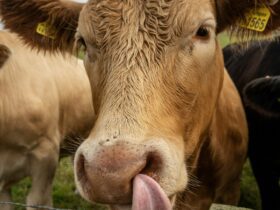
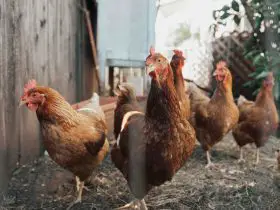
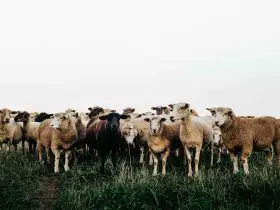
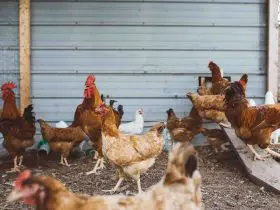

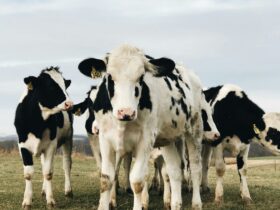
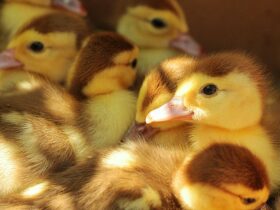
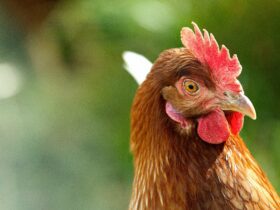



Hello!! Welcome to Anim Farm